We use information collected through cookies and similar technologies to improve your experience on our site, analyze how you use it and for marketing purposes.
Your privacy settings
We and our partners use information collected through cookies and similar technologies to improve your experience on our site, analyze how you use it and for marketing purposes. Because we respect your right to privacy, you can choose not to allow some types of cookies. However, blocking some types of cookies may impact your experience of the site and the services we are able to offer. In some cases, data obtained from cookies is shared with third parties for analytics or marketing reasons. You can exercise your right to opt-out of that sharing at any time by disabling cookies.
Manage Consent Preferences
Necessary
Always ON
These cookies and scripts are necessary for the website to function and cannot be switched off. They are usually only set in response to actions made by you which amount to a request for services, such as setting your privacy preferences, logging in or filling in forms. You can set your browser to block oralert you about these cookies, but some parts of the site will not then work. These cookies do not store any personally identifiable information.
Analytics
These cookies and scripts allow us to count visits and traffic sources, so we can measure and improve the performance of our site. They help us know which pages are the most and least popular and see how visitors move around the site. All information these cookies collect is aggregated and therefore anonymous. If you do not allow these cookies and scripts, we will not know when you have visited our site.
Embedded Videos
These cookies and scripts may be set through our site by external video hosting services likeYouTube or Vimeo. They may be used to deliver video content on our website. It's possible for the video provider to build a profile of your interests and show you relevant adverts on this or other websites. They do not directly store personal information, but are based on uniquely identifying your browser and internet device. If you do not allow these cookies or scripts it is possible that embedded video will not function as expected.
Google Fonts
Google Fonts is a font embedding service library. Google Fonts are stored on Google's CDN. The Google Fonts API is designed to limit the collection, storage, and use of end-user data to only what is needed to serve fonts efficiently. Use of Google Fonts API is unauthenticated. No cookies are sent by website visitors to the Google Fonts API. Requests to the Google Fonts API are made to resource-specific domains, such as fonts.googleapis.com or fonts.gstatic.com. This means your font requests are separate from and don't contain any credentials you send to google.com while using other Google services that are authenticated, such as Gmail.
Marketing
These cookies and scripts may be set through our site by our advertising partners. They may be used by those companies to build a profile of your interests and show you relevant adverts on other sites. They do not store directly personal information, but are based on uniquely identifying your browser and internet device. If you do not allow these cookies and scripts, you will experience less targeted advertising.
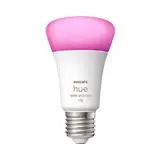
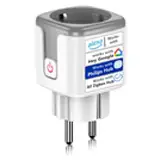
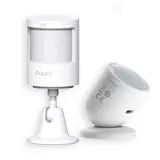
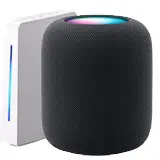
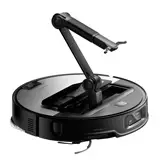

Smart planters: automatic watering for your plants
Tired of forgetting to water your plants? Going on vacation and worried about their well-being? Worry no more! Smart pots have arrived to revolutionize your plant care.
What are Smart Pots?
Smart pots are plant containers that incorporate technology to automate watering and, in some cases, even nutrient delivery. They work with sensors that measure soil moisture and, when they detect it's too dry, activate an automatic watering system. This means your plants will get just the right amount of water they need, when they need it.
Key Components of a Smart Planter
Benefits of Using Smart Pots
Using smart pots has many advantages, for both beginner and expert gardeners. Forget your worries and enjoy healthier, happier plants.
Automatic and Precise Irrigation
This is the main advantage. Smart pots water your plants automatically, ensuring they get the right amount of water. No more overwatering or underwatering, two of the most common mistakes in plant care.
Water Saving
Smart pots use water efficiently. By watering only when needed, they prevent water waste. This isn't just good for the environment, it also cuts down on your water usage and therefore your bill.
Healthier & Happier Plants
Consistent and precise watering promotes healthy plant growth. Plants that get the right amount of water are less likely to get diseases and pests.
Convenience and Time Savings
With smart planters, you can forget about the daily watering routine. This gives you more free time to enjoy other activities.
Perfect for Holidays
Going on vacation but no one to water your plants? Smart pots are the perfect solution. You can leave with peace of mind knowing your plants will be well taken care of.
Perfect for Beginners
If you're new to the world of gardening, smart pots will make taking care of your plants a whole lot easier. They'll help you avoid common mistakes and learn about each plant's needs.
Types of Smart Planters
There are different types of smart planters, each with its own features and functionalities. Choosing the right one will depend on your needs and the type of plants you want to grow.
Basic Smart Pots
These planters only have a moisture sensor and an automatic watering system. They are the most economical and easy to use. Ideal for beginners and plants that don't require very specific care.
Smart, Connected Planters
These smart pots connect to your smartphone via an app. You can control watering remotely, receive notifications about your plants' condition, and access information about their needs. These types of planters give you complete control over your plant care, even when you're not home.
Smart Pots with Advanced Sensors
In addition to the moisture sensor, these pots incorporate light, temperature, and nutrient sensors. They offer more detailed information about the plant's environment and let you optimize its growth.
Smart Pots for Indoors and Outdoors
Some planters are designed for indoor use, while others are weather-resistant and can be used outdoors. Make sure you choose a pot that's suitable for where you're going to put it.
How to Choose the Right Smart Pot
Choosing the perfect smart pot requires considering several factors. Consider the plant's size, type, location, and your budget.
Pot size
The size of the pot should be proportional to the size of the plant. A pot that is too small will restrict root growth, while a pot that is too big can retain too much moisture.
Plant type
Some plants need more water than others. Make sure to choose a smart pot that can meet your plant's watering needs. Research your plant's needs before buying a smart pot.
Location
If you're putting the pot outside, choose one that's weatherproof. Consider sun exposure and the temperature of the location.
Budget
Smart planters vary greatly in price. Set a budget and look for a planter that fits your needs and financial possibilities. Remember, the most expensive pot isn't always the best.
Additional Features
Think about whether you need extra features like connectivity, advanced sensors, or an automatic fertilization system. These features can be very useful, but they will also increase the price of the flowerpot.
How to Use a Smart Pot
Using a smart planter is very easy. Follow these steps to ensure optimal care for your plants.
Smart Pot Maintenance
To keep your smart planters working properly for a long time, it's important to perform regular maintenance. Follow these tips to keep your plant pots in perfect condition.
Regular Cleaning
Clean the plant pot and water reservoir regularly to prevent the buildup of dirt and algae. Use a soft brush and soapy water.
Humidity Sensor Review
Check that the humidity sensor is working correctly. Clean it if it's dirty, or replace it if it's damaged.
Battery Replacement
If the pot runs on batteries, replace them periodically. Use good quality batteries to ensure optimal performance.
Sensor Calibration
If the smart pot has advanced sensors, calibrate them periodically to ensure they are measuring correctly. Check the user manual for instructions on how to calibrate the sensors.
Irrigation System Review
Check that the irrigation system is working correctly. Clean the pipes and the pump if they're blocked.
Common Problems and Solutions
Like any piece of tech, smart planters can have some issues. Here are some common problems and their solutions.
The flower pot doesn't water.
The flowerpot is overwatered.
Connectivity Issues
Recommendations and Best Practices
For best results with your smart planters, follow these recommendations and best practices. Taking good care of your smart pots means healthier plants and a more thriving garden.
Choose the Right Substrate
Use a good-quality, well-draining potting mix. Avoid substrates that retain too much moisture.
Fertilize regularly.
Even though some smart planters have automatic fertilization systems, it's recommended to fertilize your plants regularly with a fertilizer that's appropriate for their species. Follow the fertilizer manufacturer's instructions.
Monitor your plants
Observe your plants regularly to look for any signs of disease or pests. Take action fast if you spot any trouble.
Adjust the Irrigation Settings
Adjust the irrigation settings based on the time of year and the specific needs of each plant. Plants need less water in winter than in summer.
Don't Overfill the Water Tank
Don't overfill the water tank. Leave space to allow for the expansion of water.
Invest in Quality
Don't skimp on expenses when buying a smart planter. A good quality pot will last longer and give you better results.
The Future of Smart Plant Pots
Smart planters are a constantly evolving technology. In the future, we can expect even smarter and more sophisticated plant pots.
Integration with Home Automation
Smart plant pots will increasingly integrate with home automation systems. You'll be able to control the watering and lighting for your plants from a single control panel.
More advanced sensors
The planters will incorporate more advanced sensors that can measure air quality, CO2 levels, and other environmental factors. This will allow for even further optimization of plant growth.
Artificial Intelligence
Artificial intelligence will play an increasingly important role in plant care. Smart planters will be able to learn from each plant's needs and automatically adjust watering and fertilization parameters.
Customization
Pots will become increasingly customizable. You'll be able to choose the design, size, and features of the planter based on your needs and preferences.
Sustainability
Pots will become increasingly sustainable. They will be made with recycled materials and use renewable energy.
Smart Planter Comparison Table
Conclusion
Smart plant pots are a great investment for any plant lover. They offer convenience, save time, and guarantee your plants get the care they need. If you're looking for an easy and efficient way to care for your plants, smart pots are the perfect solution.
Now that you know the benefits of smart pots, what are you waiting for to try them out? Share this article with your friends and family who love plants. Go ahead and have a smart garden!
Related Posts
How do automation systems work without internet?
Imagine a world where your lights turn on at dusk, your irrigation system activates at the precise time, and all this without needing the internet. Sounds like magic, right? Well, it's not. It's offline automation, a robust and reliable system that works independently of your network connection.
Motion Sensors: How Do They Improve Security and Comfort?
Can you imagine coming home and the lights turning on by themselves, welcoming you? Or getting an alert on your phone if someone approaches your property without permission? All this is possible thanks to motion sensors. These small devices are revolutionizing the way we live and protect our homes…
The best apps for managing a smart home
Home automation is no longer a thing of the future. It is the present. And the key to control it is... in your pocket. Can you imagine controlling the lights, the temperature, and even the security of your home from your smartphone? It's possible! And for that, you need the right apps. This article will guide you through the fascinating world of ...
Robot vacuums: How to choose the best model?
Tired of spending hours vacuuming your house? Imagine coming home after work and finding everything spotless, without lifting a finger! The solution exists and it's called a robot vacuum. These small appliances have revolutionized home cleaning, but with so many options on the market, choosing the best one can be overwhelming. Don't…